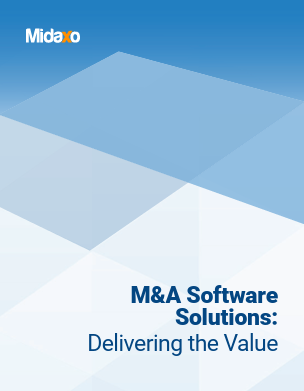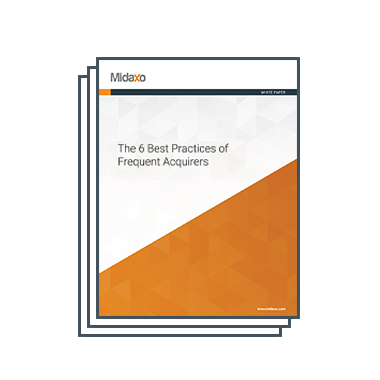Across the M&A life-cycle, post-merger integration is one of the most critical processes to ensuring a successful acquisition. While taking a prudent approach to valuation and not overpaying for revenue synergies can go some way to preventing a failed integration, there are other key factors which, if approached correctly, can significantly increase the chance of integration success (or lead to value erosion if ignored).
1. Project Readiness
Project planning and ensuring a state of “readiness” is the most crucial part of ensuring the success of an integration project. Establishing an acquisition strategy is key; knowing why your organization is going to acquire a target and identifying what part of the target is of most interest (business model, real estate, competitors, technology, R&D initiatives, etc.) foster the beginnings of an integration plan.
Ensuring the processes and planning initiatives are in place for the target to be integrated into the acquiring organization should be of top priority and addressed at the outset of an M&A campaign. Doing so can bridge the gap between due diligence and integration and help to safeguard against value erosion. However, planning is seldom viewed as a value-add activity – rather, it is most likely that project teams will move directly to the more tangible aspects of project execution.
Key activities to be covered as part of project planning/readiness include assessing the complexity of the proposed integration in context to the overall objectives/strategy of the acquiring organization, ensuring that the people resources are in place to deliver the integration project and that time frames being considered are reasonable.

2. Culture
Corporate culture can be regarded as shared values, beliefs and assumptions that influence the behavior, attitudes and meaning of an organization. Culture is implicit – it affects how people behave and is resilient against change. It is difficult for a merged organization to carry on the culture of the previous organizations. Typically, M&A deals engender shifts in management styles, practices and strategies, which can have negative consequences on the people at the heart of the organization. An abrupt shift in culture can bring about significant disruption and unease in an organization – “culture miss” can therefore be a key failure factor.
Rather than approaching culture as employee satisfaction, norms or rites, an acquirer should understand that M&A provides an opportunity to shift culture as an overall organization, instead of asking the target to conform to a pre-defined (and potentially ill-fitting) culture.
Cultural influences can be significant and must be identified to the greatest extent possible. It is a misconception to assume that people issues are easily overcome – therefore, once cultural findings have been uncovered the integration team should be informed so they can commence their approach (or flag any cultural “red flags”). Watch our recent webinar on how to approach culture in M&A to learn more.
3. Timeline Expectations
Timeline expectations should be included into the mix of integration success factors. Time is directly correlated to value erosion – the longer it takes to integrate, the more value is lost. In an integration context, timelines not only relate to mapping out task schedules and due dates, but to improving a project managers’ ability to manage their time, priorities, workload and team members in a way that enables them to manage their tasks more efficiently and effectively.
All teams need to be on the same page when it comes to project timelines. While it can be difficult to get a seat at the “decision table” for a lot of integration leads, integration teams need to put their foot down if something seems unrealistic or unachievable within a given time frame. If the integration team knows that something cannot happen within a certain amount of time, this needs to be conveyed during integration planning, not during the integration process itself or when deadlines start being missed.

4. Centralize Data
Following conclusion of an M&A due diligence process there will typically be a lot of fragmented data in circulation. It is imperative that time is taken for a detailed handover between the due diligence and integration teams. Doing so should prevent integration workstreams wasting a lot of time trying to ascertain what documents relate to and the significance of these. Furthermore, a detailed handover can prevent confusion and reduce the admin burden to a manageable level. The key to maximizing the efficacy of this process is utilizing a centralized data-source.
A centralized data source, where the due diligence team can properly save all findings, supporting documents and key metrics, will allow for a smoother transition to the integration team. In turn, this should enable the integration team to “hit the ground running” and capture deal value in a timely manner (therefore minimizing value erosion).
An increasingly popular way to approach the centralization of data and collaboration across workstreams is by adopting a digitalized approach. Such a solution enables an organization to run multiple projects simultaneously, easily track documents and pin them to specific tasks, maintain opens lines of communication and track issues from a centralized platform (learn more about M&A software through the link).
5. Overcome Silo Challenges
While different workstreams and functional departments operate separately, they should also work as one in the pursuit of a common goal. Due to the number of tasks on a typical integration project, it can be extremely difficult to know what has been completed (and when) across different workstreams. Even if there is a dedicated individual is appointed to facilitate the management of tasks, the admin burden can seem insurmountable (on a large integration project it is not uncommon for a post-merger integration checklist to cover thousands of line items).
Adopting a digitalized approach to task management enables an integration team to track task progress in real-time and work more efficiently with one click reporting. This can go a long way to capturing value and synergies more quickly. Furthermore, having a centralized tool to help visibility across all task silos can significantly reduce the admin burden and allow workstreams to focus on the key areas of integration.
6. Define Leadership
The leadership team should be defined at the start of an organization’s M&A campaign – with very clear roles agreed upon. If clear roles are not defined this could create ambiguity and result in important steps and information being missed across the board. Having defined leadership will help an organization yield the intended results from the acquisition while keeping project planning and execution organized and timely.
In terms of the day-to-day, leaders need to be down in the trenches. They need to know what talent to keep, what the culture is like, and where people have concerns. This adds a level of transparency, which will ultimately make employees feel more secure. This aids talent retention and also gives the leaders first hand perspective as to how the integration in going from both sides (see here for more on talent retention in M&A).

7. Value Driver Analysis
Value drivers comprise a large part of the rationale behind proceeding with an acquisition. A typical revenue generating value driver could entail cross-selling the target’s products or services into the acquiring organization’s established customer base within a particular business unit or geography. A typical cost-saving value driver may entail the consolidation of two offices within the same location, or leveraging the new organization’s greater purchasing power to renegotiate more favorable terms on a supplier contract. The crux of the matter here is that value drivers must be specific enough to support a business case and produce real, measurable results.
Whether it be something that is uncovered in initial due diligence, or something discovered in the early stages of integration, value drivers need to be carefully managed and nurtured. During integration, it is important for workstreams to remember why they are acquiring a target and what makes it special – failing to do so can introduce the possibility for value erosion.
8. Prioritization
As part of integration planning, it is vitally important to prioritize value drivers and prepare for execution. This prioritization, which is often helped along by a post-merger integration plan template, is important since it will not be possible to realize every synergy initially identified – there will be too many competing priorities and limited resources to devote attention to all areas.
Focus should be given to value drivers that promise to deliver the most shareholder value—in essence, the actions that deliver most of the economic value. These initiatives are most likely to be those which are (i) most closely aligned with the strategic rationale underpinning an acquisition (ii) present the highest probability of success (subject to resource and time constraints) and (iii) that can be accurately measured and tracked.
Prioritization by those entrusted with leadership should make it easier for workstreams at the coal-face to determine which tasks and activities need to be performed before others. If clear guidance is lacking it is likely that tasks will not be carried out in the intended order – in an integration setting this could result in significant value erosion.
Defining and communicating priorities (and articulating the sense of urgency associated with each task/activity/deliverable) will make it easier for workstreams to perform the task, assess risks, communicate key issues and manage the expectations of leadership.
9. Communication
Communication issues are often cited as one of the primary factors behind failed M&A deals. Communication breakdown could occur if the target is bombarded with too many information requests during the due diligence process or equally, if employees are not kept in the loop when it comes to communicating the reasons for a deal.
M&A often leaves employees and management feeling left in the dark and anxious about what the future holds. Furthermore, lack of communication can promote uncertainty and trust issues – therefore having a detrimental effect on employee engagement. Employees should be informed of the progress of the PMI process via a range of communication mediums (emails, company intranet and briefings). At the same time, management should be alive to the questions, concerns and fears employees might have.

For integration workstreams, lines of communication should be kept open at all times. It is imperative that project progress is monitored on an on-going basis and that any issues arising across tasks are communicated to the relevant individual(s) in a real-time. Taking this approach can prevent “issue bottlenecks” and help an integration project proceed at the pace necessary for maximum value capture.
Communication issues can be a huge problem and relate to the points outlined above in “Overcoming Silo Challenges”. When other parts of an organization fail to communicate well, processes and progress breaks down. Adopting M&A software as part of a digitalized approach to managing this process can help alleviate the headaches associated with communication breakdown, while providing visibility of how workstreams are progressing at any given point.
Takeaway
Taking a number of steps can help an organization run a more effective integration project. The more an integration team overlaps with the due diligence team, the greater the chances are for open lines of communication, greater engagement and collaboration and successful navigation of the silo challenges most organizations will face across an integration project. Adopting the right tools will not only help streamline an organization’s integration process, but minimize the chance of value erosion, provide greater visibility to the leadership team and promote better communication across the process – which allows for faster synergy realization and increases the likelihood of integration success.
For more details see our comprehensive Guide to Post-Merger Integration.





